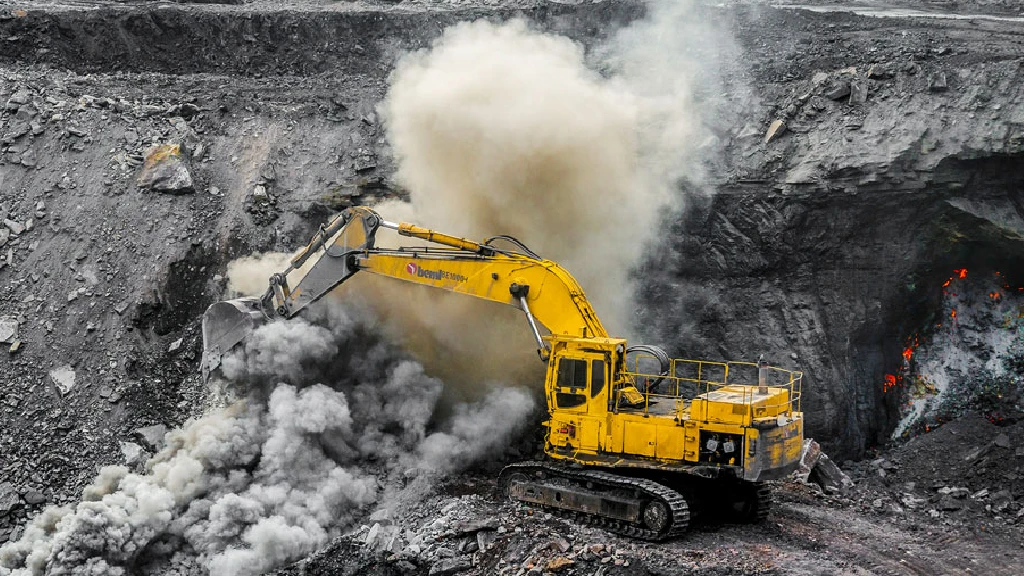It is said that mining is the backbone of a state, and it generates an economy for the province. This is the reason mining minerals from the earth’s crust is in such high demand. All valuable minerals are not found everywhere in the world that’s why it has high commercial value. When there is such a high flow of monetary values, the safety of the environment is easily ignored.

Mining industries are no different from other industries as it exploits natural resources to fulfil the need and demand of people around the globe. As a result, mining industries pollute the environment.
Mining is also responsible for climate change in 2015, therefore, in the Paris agreement was pledged to limit global warming and bring down the global temperature and was stated to decarbonize all industries but in this sector. In this article, we will bring under purview the relationship between mining and climate change.
Methods of Mining and Climate Change Impact
There are majorly three extracting methods that directly impact the relationship between mining and climate change:
1. Open-pit mining:
It is a common practice in which a large hole is dug out to extract minerals. An enlarged step-shaped ramp is constructed so that trucks can travel through it. This type of mining can cause soil pollution on a large scale. There is a depletion of surface groundwater due to the frequent mobility of heavy vehicles, the soil beneath gets loose, causing a landslide.
2. Underground mining:
In this practice, the minerals are extracted from below the earth’s surface. The mines are dug deep using vertical or horizontal tunnels into the earth’s crust. This type of mining impacts both humans as well as nature as it sometimes collapses and explodes. Due to loss of life and resource; underground mining causes severe groundwater pollution and loss of biodiversity.
There are various types of underground mining that are categorized based on the kind of shafts used, the technique of extraction and the process used to get to a deposit. For instance, drift mining involves the use of horizontal tunnels, while slope mining uses diagonal shafts to access deposits.
The type of underground mining technique used is typically based on the geology of the area, especially the amount of ground support needed to make mining safe.
i. Surface Mining
Surface mining involves removal of plant life, soil and potentially bedrock to be able to access resource deposits. It is normally used for fairly shallow, non-precious deposits. The two foremost kinds of surface mining are open-pit mining and strip mining.
Open pit mining involves digging out rocks to form an open pit or borrow pit, from which resources are then extracted. An open pit mine generally has stepped sides to minimize the risks associated with collapse and a large ramp for mining equipment. Some kind of water management system is generally necessary to keep an active mine from turning into a lake. Open-pit mines are typically worked until either the mineral deposit is depleted, or various factors make the mine non-profitable. When this occurs, the open pit is often modified to become a landfill for solid wastes.
Strip mining is mostly used to extract shallow, “bedded” deposits, where a mineral layer is covered by a layer of soft topsoil and weathered rocks. The relatively soft top layer of earth is stripped by either a dragline or industrial shovel to uncover a deposit.
ii. Placer Mining
Normally formed by weathering via water and/or wind action, placers are unconsolidated deposits of resources. Placer mining is generally done in riverbeds, sands or other sedimentary environments and involves sifting valuable materials from sediments. Famously, “panning for gold” can be part of the placer mining process. In placer operations, the extracted sedimentary material is rinsed and sluiced to pull out the desired minerals.
In addition to gold, gemstones, platinum, tin and other materials can be extracted via place mining. At least 50 percent of the world’s titanium comes from this type of mining operation.
3. Underwater mining:
In this process of mining, the resources are extracted from 120 to 150 meters below sea level. To extract minerals such as petroleum, the seafloor is drilled using a heavy machine. Such mining heavily affects marine diversity as it disturbs the flow of oceanic water and causes many serious problems to marine biologists, such as phytoplankton which directly impacts climate as aquatic organisms absorb one-fourth of CO2.
Understanding the Correlation Between Mining and Climate Change
The mining industry is highly energy-intensive and emits many greenhouse gases. The mining industry itself consumes one-fourth of energy (Stanwix et al.2015); this mining industry itself uses fossil fuel as a resource which further leads to global carbon emission many pollutants are released from mining which includes:
Nitrogen oxide causes respiratory illness. Mercury and other metals affect the growth development and neurological disorder in humans and animals, sulphur dioxide contributes to respiratory illness and acid rain, which damages the skin and eyes of beings. Particles such as dust haze and smog cause lung illness and a burning sensation in the eyes.
Advancing the Relationship Between Mining and Climate Change
It is a concept in climate-smart mining which creates a balance between achieving sustainable development and sustainable mining, especially for those populations which are involved in this mining operation.
Climate-smart mining (CSM) tries to act as a helping hand to resource-rich countries by increasing the demand for minerals while ensuring that the mining industry is managed in such a way that it minimizes the climate footprint.
There is a need to encourage the sustainable extraction of minerals and the processing of metallic minerals to be done in green energy so that there should be a minimum environmental and climatic footprint.
The processes should be handled very carefully as the market of mining is growing and the demand for metals and other resources is also growing at a rapid pace. This gives economic opportunity to the developing countries where there is an abundance of resources where private players’ involvement is majorly seen in this point the significance of clean energy in mineral extraction and processing, which must be managed responsibly and sustainably.



